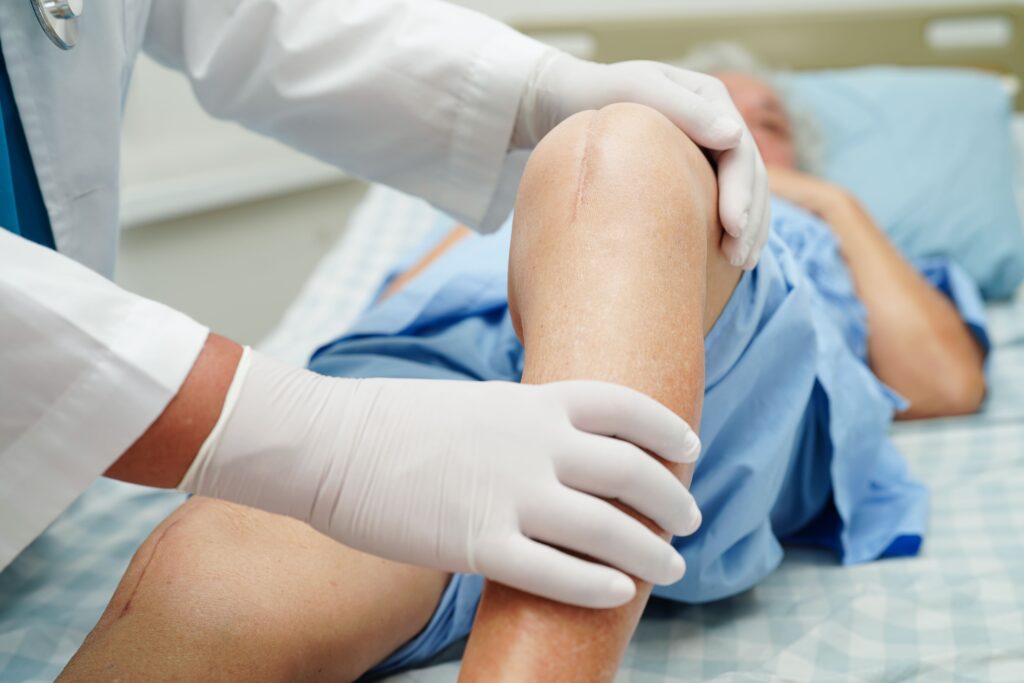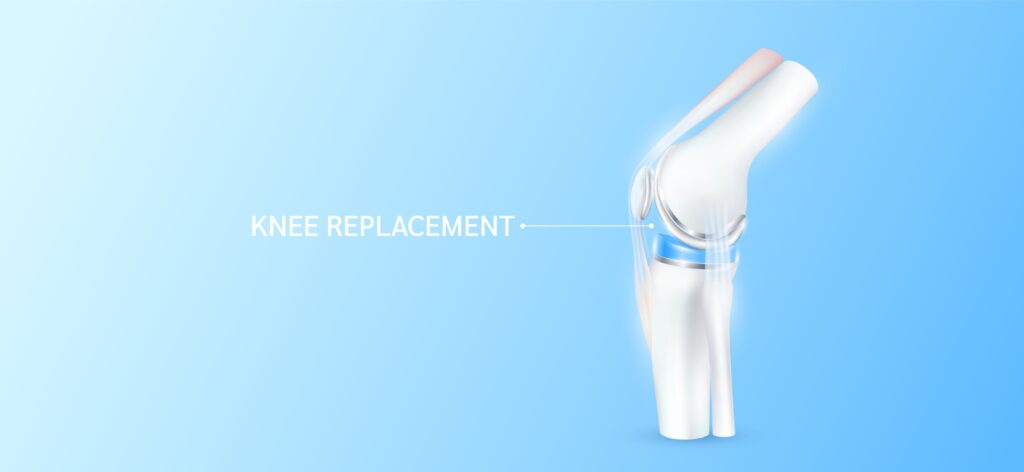What kind of scar does a knee replacement surgery leave?

This article explains the different types of knee replacement surgeries and how they impact scarring. Minimally invasive techniques used for knee replacement result in smaller incisions, less tissue damage, and faster recovery. Modern suturing with glue, instead of metal stitches, creates a more aesthetic, less visible scar while promoting better healing. Scars typically measure around 10 cm, but their visibility depends on individual patient characteristics.
Rehabilitation in the postoperative period, most frequent questions

This article answers common questions about postoperative rehabilitation after joint prosthesis surgery, focusing on hip and knee replacements. It covers when rehabilitation starts (usually within 5-6 hours post-surgery), the duration of rehabilitation (about 8 weeks), and the options for conducting it, including at-home physiotherapy or using the MyMobility app. Rehabilitation is essential to regain mobility, muscle tone, and autonomy in daily life, and it greatly improves recovery outcomes.
Minimally invasive knee surgery: back to walking in one day

This article explores the advantages of minimally invasive knee surgery, a procedure that reduces trauma, pain, and recovery time. It explains the difference between total and partial knee prostheses, which can be tailored to the patient’s needs based on the severity of arthritis. The article emphasizes that patients can return to walking within hours after surgery, with a full recovery typically taking 2-3 months. The surgery preserves most of the knee’s natural tissues and uses advanced, biocompatible prosthetics to ensure long-term durability and improved mobility.
Knee prosthesis: recovery times

This article explains the typical recovery times after knee prosthesis surgery, highlighting the different phases of recovery, which can take several weeks to months. It discusses pain management strategies, with pain typically subsiding after 5 days, and full recovery expected in 6 months. The article also details activities to avoid, such as jumping or lifting heavy objects, which could compromise the knee’s stability. Following the rehabilitation plan is crucial to speeding up recovery and regaining mobility.
Exercises to avoid with knee osteoarthritis

This article outlines the exercises to avoid with knee osteoarthritis, focusing on activities that can worsen pain and joint damage. Deep squats, lunges, and leg press exercises are particularly harmful, as they place excessive strain on the knees. High-impact sports like soccer, basketball, and running should also be avoided. Instead, low-impact activities such as swimming, cycling, yoga, and Pilates are recommended to strengthen muscles and support the knee without overloading it.
Knee replacement: a highly successful surgery

This article explains the success of knee replacement surgery, a highly reliable procedure that eliminates pain and stiffness from conditions like osteoarthritis. It covers the types of prostheses (total and partial) used, the surgical process, and the recovery timeline. Patients can expect improved mobility, with prostheses lasting over 20 years in most cases. It also emphasizes the importance of personalized treatment and follow-up care to ensure long-term success.
Recovery times after minimally invasive prosthetic surgery

This article explains how minimally invasive prosthetic surgery significantly reduces recovery times compared to traditional procedures. The surgery uses smaller incisions and advanced prosthetics, minimizing tissue damage, pain, and postoperative complications. Patients can begin walking a few hours after surgery, with full recovery taking just a few days to weeks. Physiotherapy and tools like the MyMobility app aid in the rehabilitation process, ensuring a quick return to daily activities, driving, and even sports.
Knee swelling after knee replacement surgery

Knee swelling is a common post-operative complication following knee replacement surgery. It’s caused by fluid and blood accumulation in the tissues around the knee. To reduce swelling, patients can elevate the leg, apply ice, use compression garments, and take pain medications. Preventive measures include pre-surgery preparation, modern anesthetic strategies, and proper physiotherapy. Following a balanced diet and performing preoperative exercises can also help minimize swelling and support a smoother recovery.
Knee prosthesis surgery: duration and characteristics

This article covers the details of knee prosthesis surgery, including the types of prostheses (total and partial), when surgery is recommended, and the typical duration of the procedure. It outlines the surgery steps, which last between 40 to 90 minutes, depending on the implant type. Modern prostheses last over 20 years in most patients, providing a long-term solution for osteoarthritis. Regular check-ups ensure the prosthesis remains in good condition over time.
Next-generation knee prosthesis: the future

Next-generation knee prostheses represent a breakthrough in joint replacement surgery, providing highly durable and customizable solutions for patients with severe osteoarthritis. These advanced implants, made from biocompatible materials, promote faster recovery, with patients walking just hours after surgery. With a lifespan exceeding 20 years, knee prostheses restore mobility and improve quality of life for those suffering from joint pain and disability.

